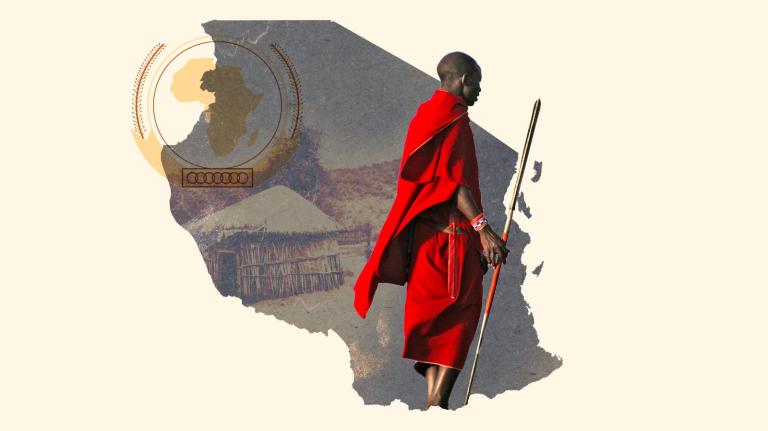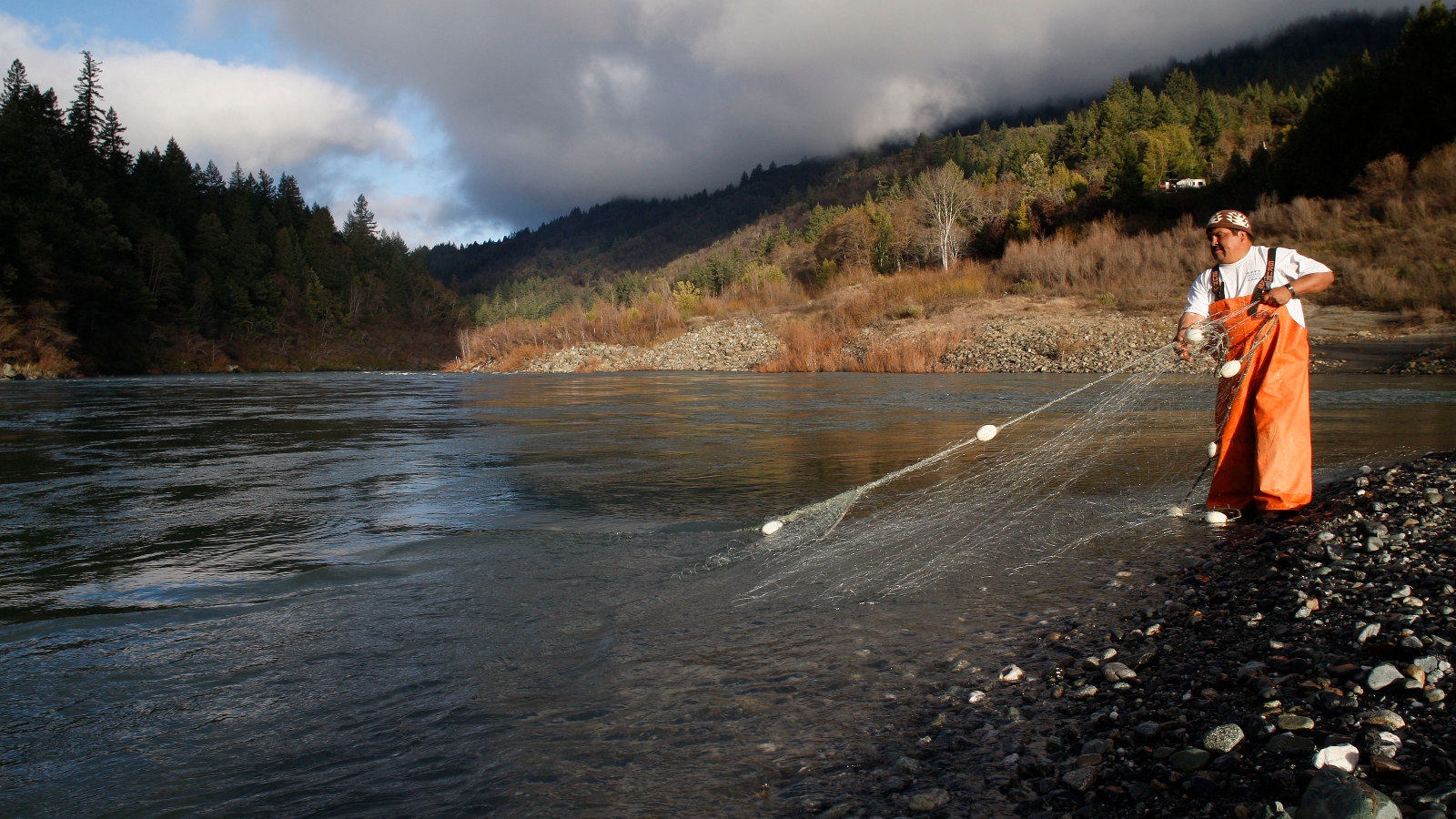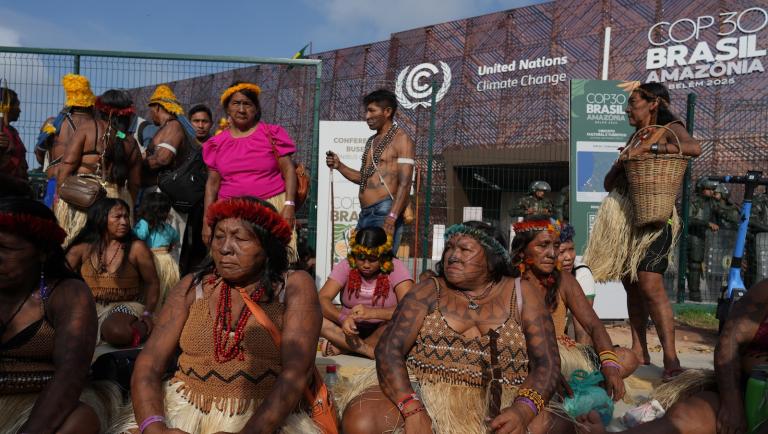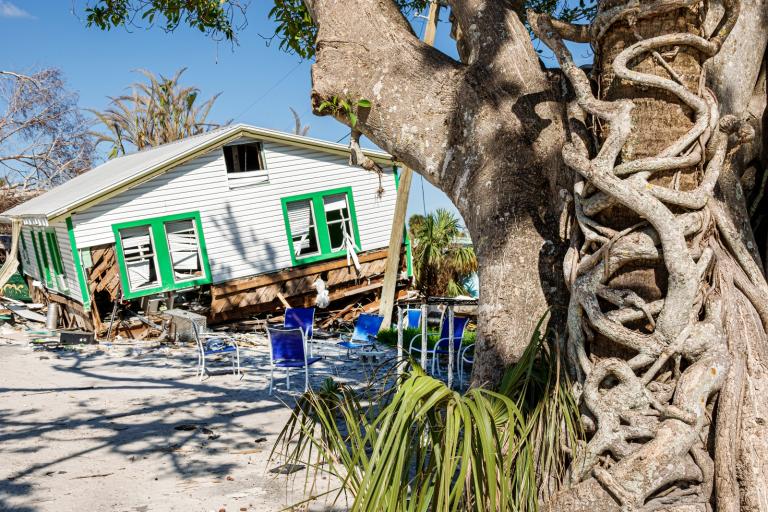This story was reported and produced in collaboration with High Country News.
Last fall, following a 20-year campaign led by tribal organizers, the federal government ordered the removal of four dams on the Klamath River, which flows from Oregon to California. For almost a century, these dams have prevented the river’s salmon from swimming upstream to spawn.
The dams will be gone by next year, but now the salmon, including endangered coho, are facing a renewed threat from farther upstream. The U.S. Bureau of Reclamation, which controls another set of dams on the Klamath, announced last week that it will cut flows on the river to historic lows, drying out the river and likely killing salmon farther downstream.
“The bureau’s proposal will kill salmon, and there’s no question about it,” said Amy Cordalis, general counsel for and citizen of the Yurok Tribe. “These are some of the lowest flows the Klamath River has ever seen.” Cordalis said that the last time the river faced such low flows was 2002, when the Klamath saw the largest fish kill in U.S. history. That eliminated a generation of salmon, leading to economic devastation for the West Coast fishing industry.
Instead of letting the water flow downstream, Reclamation plans to hold it back in Upper Klamath Lake, which feeds the river. The U.S. Fish and Wildlife Service sets minimum water levels to keep endangered c’waam and koptu, or suckerfish, alive, and Reclamation said it will hold back water so it can meet those minimum levels.
In the past few years, as drought in Oregon and California lowered water levels on the Klamath, Reclamation struggled to manage the competing needs of the salmon and the suckers: If the suckers get the water, the salmon die, and if the salmon get the water, the suckers die. Reclamation’s management of the river pits salmon and the Yurok and Karuk tribes that protect them in the lower Klamath basin against suckerfish and the Klamath Tribes that protect them in the upper basin.
Not only will the flow cuts endanger the salmon in the lower basin, they may not save the suckers either.
“I think it’s too little, too late,” said Clayton Dumont, the chairman of the Klamath Tribes, whose territory extends across the upper Klamath Basin. “C’waam and koptu need a certain amount of water over them to escape predation, and we don’t believe that the bureau’s cut is sufficient.” In other words, even as Reclamation dries out the salmon’s habitat, they may also fail to protect the suckers’ habitat, barring strong rain for the remainder of the winter. Dumont said this could be the fourth year in a row that lake levels fall too low for the suckerfish to survive.
But salmon and suckerfish aren’t the only ones using the basin’s water. Some tribal leaders say Reclamation manufactured the salmon-suckerfish dilemma to obscure where the water is really going: crops, which use hundreds of thousands of acre-feet of Klamath River water annually.
“This has more to do with potatoes than it does fish,” said Karuk Tribal Council Member Troy Hockaday. “What the bureau is not saying is that the water savings will make it more likely that irrigation deliveries will be available to water users.”
The basin has more than 200,000 acres of irrigated farmland, between 10,000 and 14,000 of which are dedicated to potatoes, an Indigenous food originally engineered from a toxic wild root by Andean horticulturists. Roughly three quarters of the basin’s potato yield go to companies like Frito Lay for potato chips, and In-N-Out Burger for fries, according to the Klamath Water Users Association.
Tribes say the scale of the Klamath Basin’s agricultural project is unsustainable. “We just cannot support a 220,000-acre irrigation project anymore, and we have to find a way to downsize that project,” said Craig Tucker, natural resources policy consultant for the Karuk Tribe. “I don’t think we should kick people off their farms and destroy their livelihood. There should be a just, fair way to buy out willing sellers, compensate people at fair market value. But we cannot farm in the 21st century like we did in the 20th, because the weather is just not the same.”
Cordalis said that part of the reason for the salmon-and-suckerfish dilemma is that Reclamation released more water for agriculture last year than was necessary.
“What that did was it drove down the lake really, really far, and so we are essentially starting with an empty bathtub,” she said. “And so, then what [the bureau is] doing is saying, ‘oh, no, we don’t have enough for species…and so now we have to decide, which fish are we going to kill?’ And they’ve decided it’s the coho this year.”
“The Klamath Basin is facing the real potential for a fourth consecutive year of extraordinarily dry conditions,” said a Reclamation spokesperson. “Reclamation’s proactive measures to adaptively manage Klamath River flows are designed to create springtime conditions that mitigate risks to species and the environment, while we also work with agricultural communities.”
Diverting water from the basin and leaving tribes to scramble on behalf of the fish they’re duty-bound to protect continues the old colonial strategy of divisiveness, the Yurok Tribe’s Vice Chairman Frankie Meyers said.
“We should instead be focused on meaningful restoration of the wetlands that accommodated the needs of sucker and salmon for millennia that were sacrificed on the altar of Manifest Destiny,” he said.
Irrigators in the Klamath Basin don’t necessarily disagree. Moss Driscoll, director of water policy at the Klamath Water Users Association, said basin-wide solutions could include restoring other wetlands and reservoirs in the area, such as Tule Lake, that supplement agricultural water needs. This could free up Klamath water for endangered fish. “The farming community is working on opportunities to manage water in new and creative ways that can restore the function of the landscape, in a manner that supports wildlife, fish, the environment and farming alike,” Driscoll said.
The Fish and Wildlife Service is weighing a large restoration project on Upper Klamath Lake that would convert 18,000 acres of ranchland back into natural wetlands, expanding the safe habitat for c’waam and koptu.
As the removal of the river’s four non-irrigating dams looms, the focus is on long-term solutions for whole watershed health. To that end, the Fish and Wildlife Service, in collaboration with other stakeholders including the National Oceanic and Atmospheric Administration, the Pacific States Marine Fisheries Commission, and the Klamath River Renewal Corporation (which is in charge of dam removal), have outlined a strategy to identify and address the “root causes” of watershed degradation.
But to tribes, the root cause of this fish-and-chips disaster is clear. “We’re just not gonna have fish in the future if we don’t reduce irrigation demand,” said Tucker. “We’re going to have to change the way we eat, and we’re gonna have to change agriculture a little bit.”



